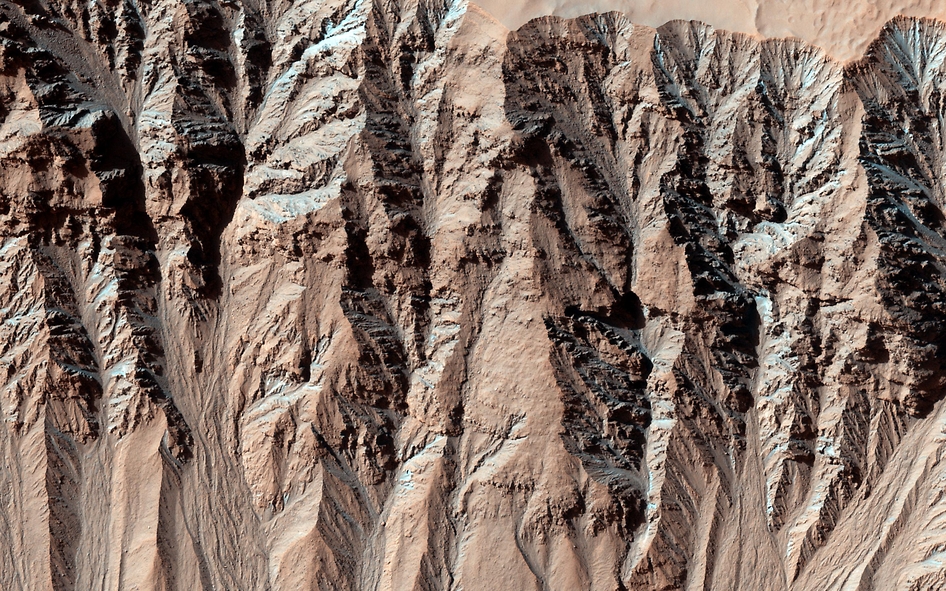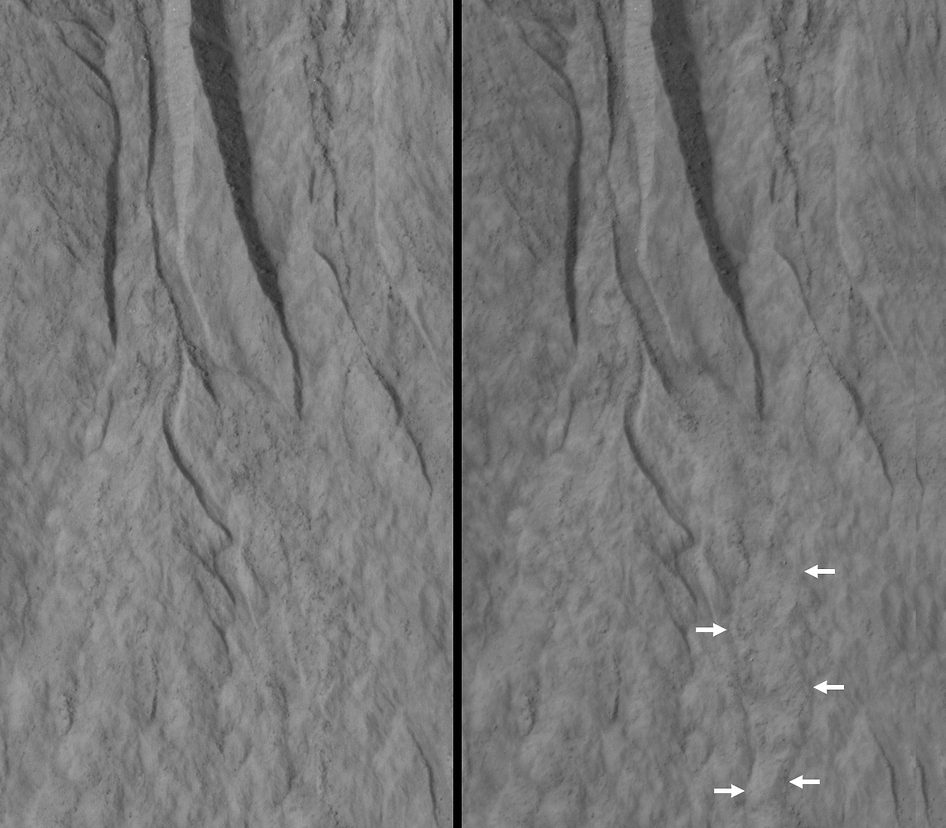Gullies on Mars Carved by Dry Ice, Not Water

Running water didn't create the channels that crisscross the surface of the Red Planet, a new study suggests.
The gullies of Mars remain active and tend to form during cold weather, implicating frozen carbon dioxide — also known as "dry ice" — rather than liquid water, researchers said.
"As recently as five years ago, I thought the gullies on Mars indicated activity of liquid water," study lead author Colin Dundas, of the U.S. Geological Survey's Astrogeology Science Center in Flagstaff, Arizona, said in a NASA statement. "We were able to get many more observations, and as we started to see more activity and pin down the timing of gully formation and change, we saw that the activity occurs in winter." [The Search for Water on Mars (Photos)]
Dry ice, not wet water
Dundas and his team used the High Resolution Imaging Science Experiment (HiRISE) on board NASA's Mars Reconnaissance Orbiter (MRO) to study 356 sites on Mars since gullies were first identified in 2006. The researchers found that 38 of these sites showed active gully formation.
By studying the sites over time, the scientists determined that the ongoing changes occurred at times too cold for liquid water to flow. So dry ice is likely primarily responsible for altering the gullies of Mars, they said.
On Earth, flowing water creates features that bear strong similarities to the Red Planet's channels. But Earth doesn't have gullies created by dry ice to compare to the Martian landforms.
Get the Space.com Newsletter
Breaking space news, the latest updates on rocket launches, skywatching events and more!
"The pressure and temperature conditions for dry ice to exist aren't found in nature on Earth," Dundas told Space.com via email. "On Mars, they occur every winter, forming a seasonal polar cap of dry ice."

Dry ice can form gullies through a variety of means, and Dundas said all of the potential methods may be involved on the Red Planet. The sublimation of dry ice — the change of the material from solid to gas without passing through the liquid stage — can loosen material on Martian slopes, setting off avalanches of material.
Sublimation can also trigger a process known as "frosted granular flow," in which the frost reduces the friction between particles and allows them to flow more easily than they ordinarily would.
"Individual gullies may require millions of years to form, but there are likely to be many mass movements during that time," Dundas said. "At present, it appears that the typical time between events in a gully is on the order of centuries, but some are more active than average."
The new research appears in the online version of the journal Icarus.
Gullies in the dunes
Using HiRISE, the scientists observed newly formed gullies on the sand dunesof Mars. These features tend to be more active — most likely, Dundas said, because the material is loose and weak.
No new gullies have been spotted forming from scratch in other regions, but the team observed changes that contribute to gully formation, such as channels in existing features becoming eroded or enlarged.
Newer and active gullies have more sharply defined characteristics than their older cousins. Time smoothes and degrades the edges of the channels, wearing them away unless ongoing activity revitalizes them.

The new results may come as a bit of blow to people who hope that water still flows on the Red Planet today, as it did billions of years ago. But there are other reasons for such folks to remain optimistic.
For example, features known as "recurring slope lineae" — dark narrow streaks running down Martian slopes — occur during the summer and on warmer, equator-facing slopes.
"The warmer temperatures make water or briny solutions possible," Dundas said. "There are still strong candidates for present-day liquid."
Follow us @Spacedotcom, Facebook or Google+. Originally published on Space.com.
Join our Space Forums to keep talking space on the latest missions, night sky and more! And if you have a news tip, correction or comment, let us know at: community@space.com.

Nola Taylor Tillman is a contributing writer for Space.com. She loves all things space and astronomy-related, and enjoys the opportunity to learn more. She has a Bachelor’s degree in English and Astrophysics from Agnes Scott college and served as an intern at Sky & Telescope magazine. In her free time, she homeschools her four children. Follow her on Twitter at @NolaTRedd









